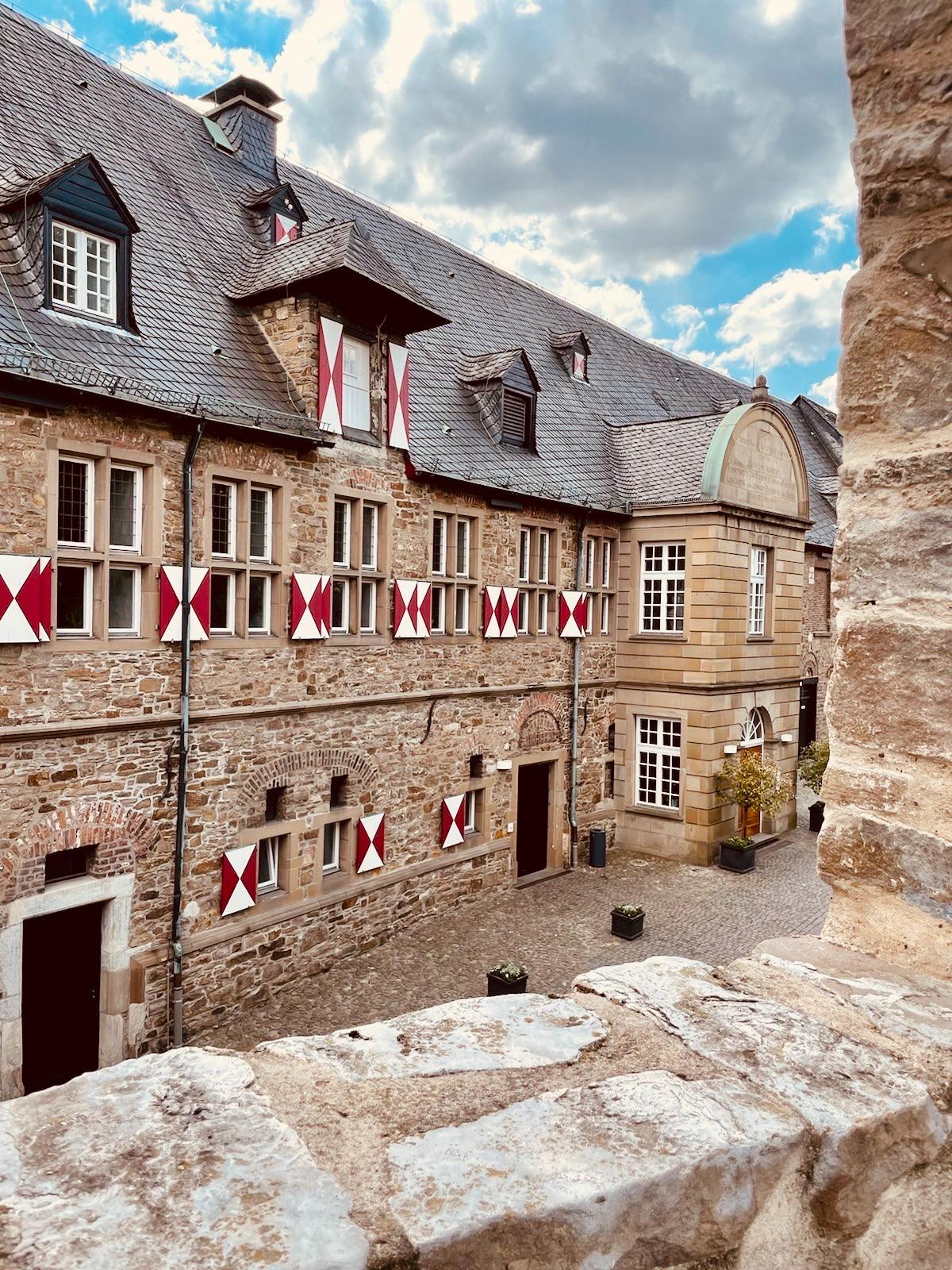Out of concern for the vital long-distance trade along the early medieval Hellweg, Duke Heinrich had a fortified military camp built in nearby Broich that same winter. The elevated position and proximity to the Ruhr proved practical, and the facility was expanded in the following decades. From camp to fortress and from castle to palace, it long served as the political and military center of the Broich domain, whose extent reached far beyond today's Mülheim city area.



Wars, conquests, and changes of ownership continued to characterize the development of the castle complex. After the Vikings, several Cologne archbishops, with their armies sometimes as large as 22,000 men, passed through Broich in the year 1240 as well as from 1437 to 1439. A bit further travel was taken by the Spanish military in the 16th century. And with Napoleon's invasion at the Rhine and Ruhr, the rule over Broich came to an end. Among the more popular visitors were certainly Luise and Friederike, duchesses of Mecklenburg. The later Queen Luise of Prussia spent some time in her childhood at the castle together with her sister, who became Queen of Hanover in 1837. Her bust stands in a prominent place in the historic castle.
Today, the renovated rooms are mainly used for civil marriages, receptions, and honors. But the castle is also open to visitors: The outdoor facilities are freely accessible, and the museum offers a glimpse into the tumultuous history of the walls through its permanent exhibition. Additionally, during the "Pfingstspektakel" in spring, there is the opportunity to dive into the Middle Ages and watch the great knight tournament on the authentically recreated tournament ground or see heavy metal bands at "Castle Rock" making the venerable castle walls tremble. During the Advent season, the "Broicher Schlossweihnacht" then imbues the medieval courtyard with crackling fire pits, spicy scents of baked goods, and (almost) real knights, maidens, craftsmen, or jesters into a pre-Christmas atmosphere.
